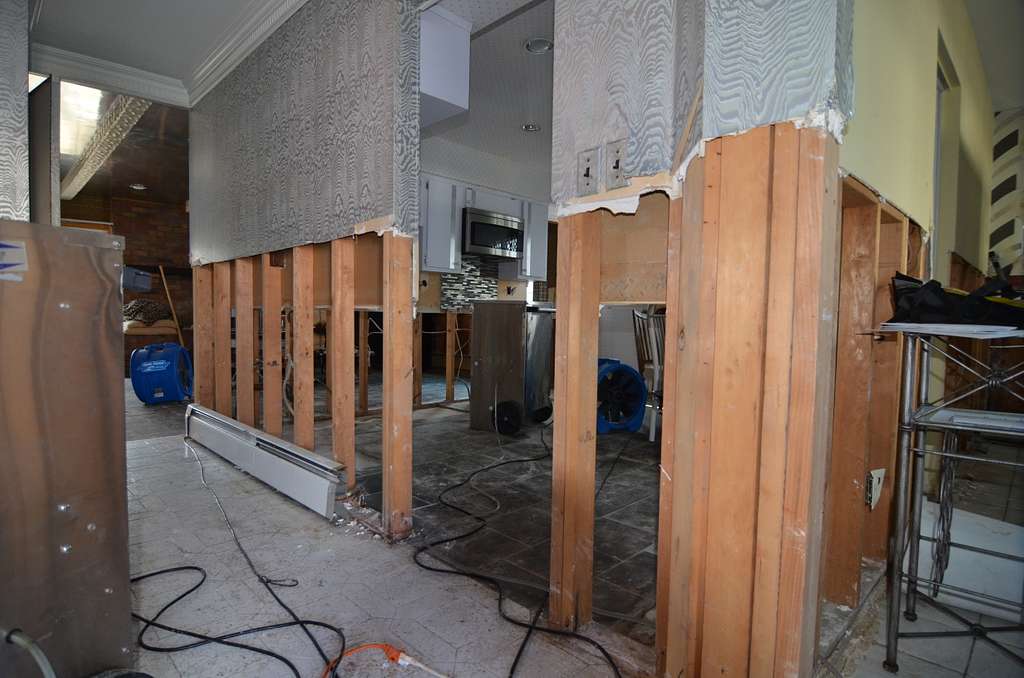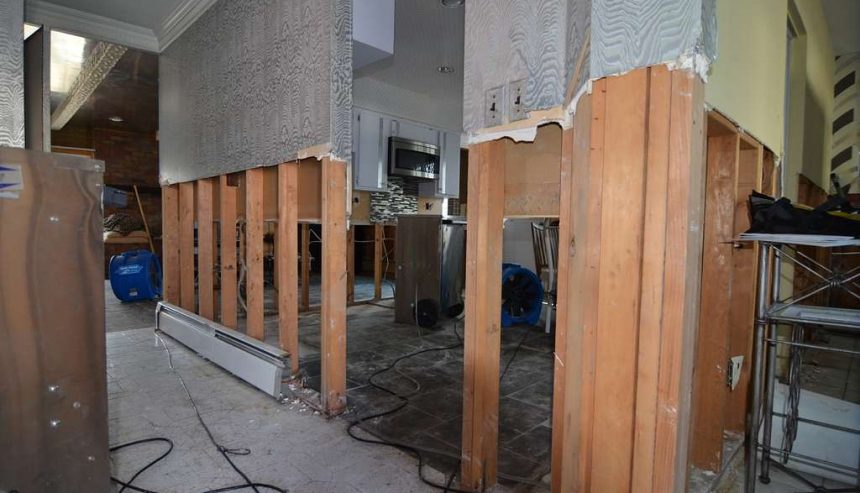Water damage and mold removal is a complicated procedure that necessitates expert assistance. This article delves into the details of the process, explains why tenants must vacate during removal, and offers strategies for reducing mold exposure in homes affected by water damage.
The Process of Water Damage and Mold removal
1. Identifying and Correcting the Source of Water Leak
First, the experts must determine the source of the water intrusion. Picture a bucket with a small hole causing water to drip out. Before mopping up the spilled water, you need to patch the hole. In the same way, they address the leak to prevent further water ingress. This could involve repairing a broken pipe, a leaking roof, or another origin..
2. Extracting Water
Next, they need to remove the water that has already leaked. They use big, powerful vacuums (like the ones you might see in a car wash) to suck up all the standing water. This step is like using a mop to clean up a spill on the floor, but much more powerful and thorough.
3. Drying and Dehumidifying
After the water is removed, everything is still wet, kind of like when you spill a drink on the carpet. To dry everything out, they use big fans and special machines called dehumidifiers that take moisture out of the air. This is like using a hairdryer to dry your wet hair, but for a whole room.
4. Removing Affected Materials
If some parts of the house, like drywall (the material walls are made of) or carpets, get wet and moldy, they need to be taken out. This is because mold can make people sick, and it can grow and spread if it’s not removed. It’s like when you find moldy bread in your kitchen—you throw it away because you don’t want to get sick.
5. Ensuring Dryness
Before they can start fixing everything, they have to make sure that the house is completely dry. They use special tools to check for any moisture. This is like checking to make sure your clothes are fully dry before you fold them and put them away.
6. Restoration
Once everything is dry and mold-free, the professionals can start fixing the house. They replace the drywall, put in new carpets, and fix anything else that was damaged. This step is like putting new pieces in a puzzle to make the picture complete again.
People Also Read : A Guide to Understanding the Water Damage Restoration Process
Why Can’t Tenants Stay During remediation? |Water Damage and Mold removal
The process of fixing water damage and removing mold can be dangerous. The chemicals used to kill mold are very strong and can hurt people if they are not handled properly. Plus, the equipment and work can be very disruptive and messy. It’s not safe or practical for people to live in the house while all this work is going on.
What to Do If You Have to Stay in a Water-Damaged Home | Water Damage and Mold removal
If you ever have to stay in a home with water damage, here are some tips to stay safe:
- Dry the Area Quickly: Use fans and open windows to dry out the wet areas fast.
- Remove Wet Items: Throw away anything that is wet and can grow mold, like boxes and papers.
- Use Mold Spray: Spray areas where mold might grow with a special mold-killing spray.
- Keep the Air Dry: Use dehumidifiers to keep the air in your home dry.
- Contain the Area: If only part of the home is damaged, set up a barrier with plastic and tape to keep the mold from spreading to other areas.
Tenant Presence During Water Damage and Mold removal
Tenants cannot be present during extensive mold removal for several reasons:
- Health Risks: The chemicals used in water damage and mold removal can be harmful if not handled correctly. These substances are toxic and can cause serious health issues if inhaled or touched.
- Disruption: The process involves heavy equipment and significant disruption, making it impractical for tenants to stay in the property.
- Safety: Professionals need an unobstructed workspace to ensure thorough removal without interference.
Dealing with Tenant Relocation During Water Damage and Mold removal
If tenants are responsible for the damage, landlords might still need to bear the cost of temporary relocation to ensure the property is safe and habitable post-removal. However, landlords should document all interactions and expenses meticulously to handle any disputes.
Mitigating Mold Exposure
If you must live in a water-damaged home, follow these steps to mitigate mold exposure:
- Dry Out the Area: Use fans, dehumidifiers, and open windows to promote airflow and dry out the space quickly.
- Remove Wet Materials: Discard wet boxes, papers, and fabrics that can harbor mold.
- Use Antimicrobial Agents: Spray affected areas with mold-killing sprays to prevent mold from growing.
- Monitor Humidity Levels: Keep indoor humidity levels below 60% to prevent mold growth.
- Containment: Set up a containment barrier with plastic and tape around the damaged area to isolate it and prevent mold spores from spreading.
Professional Intervention During Water Damage and Mold removal
While some steps can be taken independently, professional services are crucial for extensive water damage and mold removal. PuroClean of Rockwall has the expertise and equipment to ensure thorough and safe removal, protecting your health and property.
Conclusion

Addressing water damage and mold removal is essential to avoid long-term harm and health issues. Due to the associated risks, tenants should vacate the premises during these procedures. Swift professional action and thorough documentation can reduce mold exposure and guarantee a safe living space.
By following these guidelines, you can create a safe and healthy environment for your tenants and protect your property from the detrimental effects of water damage and mold. In the case of water damage or Mold in Rockwall and surroundings. Please Call us on (972) 961-4333.




 PuroClean of Rockwall
PuroClean of Rockwall